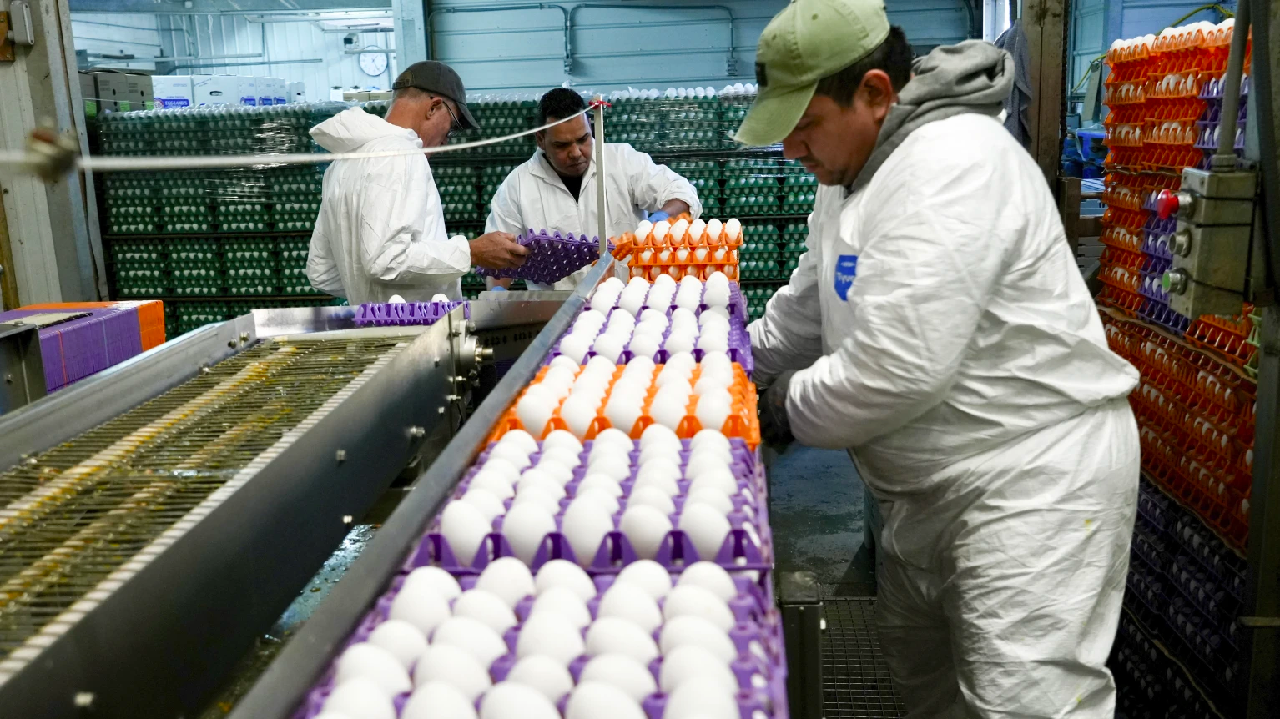Bird Flu Outbreaks in the U.S. Hit California's Main Egg-Producing Region
A year on from the bird flu outbreak that caused unprecedented egg prices and severe shortages, the disease, also known as highly pathogenic avian influenza, is causing destruction in California. The state had previously evaded the initial series of outbreaks that severely impacted poultry farms in the Midwest.

California is experiencing a catastrophic outbreak of the highly pathogenic avian influenza, a year after the bird flu induced an unprecedented surge in egg prices and a nationwide dearth of supplies. The influenza, which devastated poultry farms in the Midwest leading to extensive loss, had earlier spared California, now at its epicenter.
Sonoma County, hit severely by the highly infectious virus, has had to announce a state of emergency.
In compliance with government regulations, Sunrise Farms, owned by Mike Weber, had to cull its entire assembly of 550,000 egg-laying hens to safeguard other farming establishments in Sonoma County, located north of San Francisco.
The preceding two months have seen nearly a dozen commercial farms eradicate over a million birds to manage the outbreak, inflicting an economic setback on farmers, laborers, and consumers.
Commercial egg-production farms in Merced County, located in Central California, have also suffered severe blows due to the outbreaks in the recent weeks.
According to experts, the bird flu is primarily disseminated by ducks, geese, and other migratory birds. These waterfowl are carriers of the virus potentially affecting chicken and turkey farms and backyard flocks through their fecal matter and nasal discharges, without them falling sick.
Poultry farms in California are resorting to stringent biosecurity measures to mitigate the disease's spread. Annette Jones, the State Veterinarian, has necessitated that farmers keep their poultry indoors until June, including organic chickens that are typically required to have outdoor access.
The decline in local hens led to an increase in egg prices in the San Francisco Bay Area during the holidays, preceding an influx of suppliers from outside the region into supermarkets and restaurants.
Although bird flu has existed for several decades, the recent outbreak beginning early 2022 has led officials to annihilate nearly 82 million birds, predominantly egg-laying chickens, across 47 U.S. states, as per information from the U.S. Department of Agriculture. In instances where the disease is detected, the entire flock is culled to avert its proliferation.
January 2023 saw the price of a dozen eggs skyrocketing to $4.82 at its zenith. However, egg prices returned to their usual range as producers started rebuilding their flocks and controlling the outbreaks. Turkey and chicken prices also experienced an unprecedented surge due partially to the virus.
Maurice Pitesky, a poultry expert at the University of California, Davis, highlights climate change as a growing risk factor for such outbreaks. Altered migratory patterns of wild birds due to changing weather conditions increase this risk. Intriguingly, exceptional rainfall the past year led to the creation of new habitats for waterfowl across California close to poultry farms.
Warning of the potential dangers of exposure to these virus-carrying wild birds, Rodrigo Gallardo, a UC Davis researcher studying avian influenza, advises owners of backyard flocks to protect their chickens by maintaining cleanliness with their clothes and shoes. If there is a sudden increase in chicken deaths, investigations for avian flu should be conducted.
Ettamarie Peterson, a retired teacher based in Petaluma, owns approximately 50 chickens whose eggs she sells from her backyard barn. Peterson voiced her concern about the unstoppable spread of the avian flu by wild birds, explaining that the law necessitates culling of the entire flock if any cases are detected.
Emily Johnson for TROIB News
Find more stories on the environment and climate change on TROIB/Planet Health












